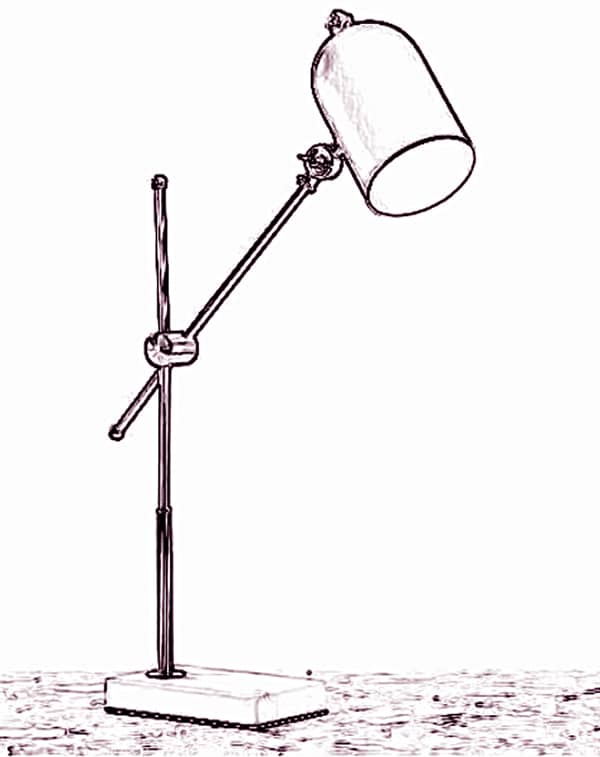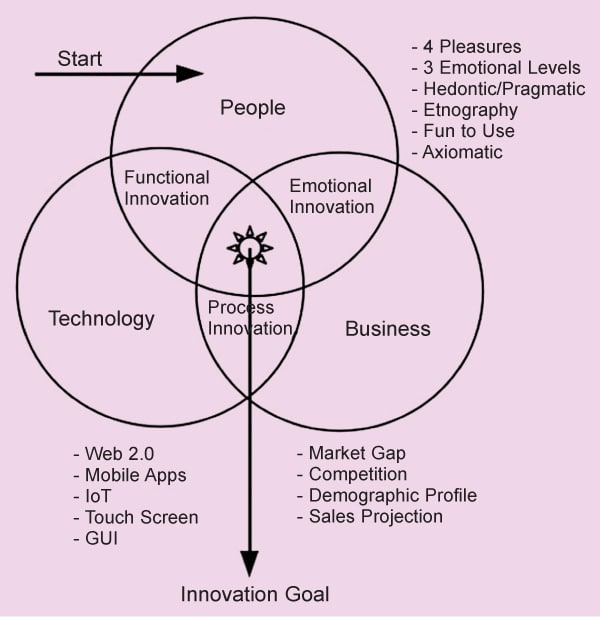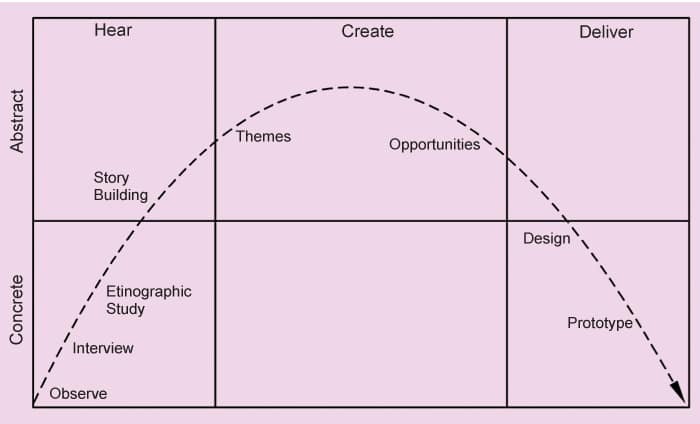From the art of styling to the importance of cultural sensitivity and technical requirements, we’ve explored the crucial role of user interface and product styling in shaping consumer perceptions and product success. After all, product design is not just about looks; it’s about creating meaningful connections with people.
A product is primarily judged by its appearance. Even before the customer uses the product, they form an opinion based on its looks. After aesthetics, the next important aspect of a product is its usability. A product is rendered useless if it is difficult to use. This difficulty arises from complex controls and confusing signals.
A product that is challenging to use has a high chance of being misused. Complicated controls also lead to mistakes, resulting in early product failure. In our first article of this series, we discussed affordances and signifiers.
Affordances are product features designed to allow users to interact with the product. Signifiers are cues that guide users to the affordances and inform them about what they can do with them.
Affordances are like doors and windows in a building that help us enter a room or look outside. In electronic products, these are the input devices like switches, knobs, and sliders, or the output devices like displays, lights, and alarms.
If we simply include a bunch of switches, dials, LEDs, and displays without providing any information, they will not make any sense. It is common practice to label or use visual representations to signify the purpose of a switch.
We must consider the user’s culture when planning signifiers. Writing labels in English may have no meaning for rural populations who understand only the vernacular language. Many countries have regulations prohibiting the sale of products that provide instructions in a language unfamiliar to the local population.
In multilingual countries like India, language-related issues are evident. Smart devices can address these issues with multilingual interfaces, while other devices often benefit from using pictures instead of words.
Even with pictures, we must consider the ethnic background of users. Some cultures read from left to right, while others read from right to left. Using a layout that requires controls to be used in a specific sequence may confuse users with different cultural backgrounds. Product designers must be sensitive to these cultural differences to avoid creating confusion.
In addition to controls, the overall look of the product itself communicates a story to the user. The styling, surface quality, and build quality convey the product’s level of excellence.
If the prospective buyer is put off by the appearance of the product, we don’t even get a chance to engage with them. Aesthetics and styling are crucial.
Styling is an art that comes with practice. We can gain insights by studying different successful products.
A fundamental aspect of styling is maintaining harmony among the product, fonts, icons, logo, and colour scheme.
There are three basic genres of product styling.
Victorian Style
Victorian design refers to the aesthetic and architectural style that emerged during the reign of Queen Victoria of the United Kingdom (1837-1901). This period witnessed significant industrial and technological advancements, and the design of the era reflected the opulence of the upper class and the impact of the Industrial Revolution.
Victorian design encompassed various architectural styles, including Gothic Revival, Italianate, Queen Anne, and Second Empire, among others. These styles often featured elaborate detailing, intricate ornamentation, and a fusion of different architectural elements.
Elaborate woodwork, intricate carvings, and decorative mouldings adorned walls and ceilings. The colour palette ranged from rich, deep tones like burgundy and forest green to softer pastel shades.

The Victorian Design also emphasized the use of patterns and motifs. Floral patterns, damasks, and intricate wallpapers were popular choices for textiles and wall coverings. Elaborate tiling and mosaic work were incorporated into floors, fireplaces, and other surfaces.
The overall effect was one of abundance and visual richness. This movement, led by influential designers such as William Morris, reacted against the mass-produced, ornate style of the time and sought to revive traditional artisan techniques.
Today, Victorian design continues to inspire and influence contemporary aesthetics. Elements of Victorian architecture and interior design can be found in many historic buildings, and the opulent and romantic aesthetic of the era is often incorporated into modern interpretations of traditional styles. This style evokes a sense of rich abundance.
Bauhaus (Modern)
Bauhaus was a highly influential art and design school that operated in Germany from 1919 to 1933. It was founded by architect Walter Gropius to merge crafts and fine arts to create a new approach to design that would be functional, efficient, and aesthetically pleasing. The school’s name, Bauhaus, literally translates to “building house” in German.

One of the key principles of Bauhaus design was the integration of art, craftsmanship, and technology. The school aimed to bridge the gap between traditional crafts and industrial mass production, combining new materials and manufacturing techniques with artistic sensibilities. It emphasized the importance of practicality and functionality in design, striving for simplicity and clarity of form.
Bauhaus Design was characterized by several distinctive features. It embraced abstract, angular, and geometric shapes, with minimal ornamentation and clean lines. This minimalist approach rejected unnecessary embellishments in favour of simplicity.
The school’s philosophy was encapsulated in the famous phrase ‘form follows function,’ suggesting that the design of an object should be determined by its intended purpose.
Another important aspect of Bauhaus design was its emphasis on interdisciplinary collaboration. The school brought together artists, architects, designers, and craftsmen from various disciplines, fostering a creative exchange. This approach encouraged experimentation and innovation, leading to the development of new design ideas and solutions.
Bauhaus’s Design also incorporated bold use of colour. Artists and designers associated with the movement explored the expressive potential of colour and aimed to create harmonious compositions. They often used primary colours and simple geometric shapes to achieve visual balance and impact.
The influence of Bauhaus design extends beyond its existence as a school. Many of its principles and aesthetics have had a profound impact on modern design. The emphasis on functionality, minimalism, and the integration of art and technology can be seen in various fields such as architecture, furniture design, graphic design, and industrial design.
The Bauhaus legacy continues to inspire designers and artists worldwide, reflecting its enduring relevance and innovative spirit.
People-centric Design (IDEO Way)
IDEO is a renowned design and innovation consulting firm founded in 1991 and headquartered in Palo Alto, California. The company has gained global recognition for its human-centered design approach, collaborating with numerous clients from various industries to help solve complex problems and drive innovation.
IDEO’s design philosophy revolves around the concept of empathy, deeply understanding the needs, desires, and behaviors of the people they are designing for. This user-centered approach allows IDEO to create innovative solutions that resonate with end-users.

The firm employs a multidisciplinary team of designers, engineers, social scientists, business strategists, and other professionals, enabling them to tackle a wide range of challenges.
IDEO utilizes a collaborative and iterative design process, often referred to as design thinking, which involves stages such as research, brainstorming, prototyping, and testing. This process helps generate and refine ideas, ensuring the final solution is both functional and desirable.
IDEO’s portfolio spans various industries, including technology, healthcare, education, consumer products, and social impact. They have worked on diverse projects, such as designing user-friendly digital interfaces, creating innovative medical devices, developing sustainable packaging solutions, and reimagining public space layouts.
Notably, IDEO created the first commercial computer mouse for Apple in the 1980s and developed the first foldable laptop design. Their design thinking methodology and innovative approach have been widely recognized and emulated by other organizations and institutions worldwide.
IDEO’s work has received numerous awards and accolades, solidifying its reputation as a leader in design and innovation.
IDEO’s work and design philosophy have inspired many designers and organizations to adopt a human-centered approach to problem-solving and innovation. Their emphasis on empathy, collaboration, and iterative design processes continues to shape the field of design and influence how businesses approach innovation.

According to IDEO philosophy, a successful design must combine people’s needs, technological feasibility, and business sense. It should leverage the opportunities offered by technological progress and innovation. People are at the center of IDEO’s design processes.
According to the IDEO process, the design must address four pleasures experienced by people. These four pleasures are:
1. Physical Pleasure: Appeals to the five senses—sight, hearing, smell, touch, and taste.
2. Social Pleasure: Esteem value. The product should make people proud of owning it. Emphasizing a product as cheap and meant for the poor diminishes its esteem value. Good looks, brands, appealing logos, feel-good advertisements, and socially responsible products address this pleasure.
3. Psychological Pleasure: Owning the product should give a sense of achievement. This is why people often crave premium products when a cheaper alternative would suffice their needs.
4. Ideological Pleasure: Arises from doing the right thing. It may stem from factors like environmental friendliness and sustainability, or a sense of belonging, such as ‘Made in India.’
People have three types of emotional responses to these four pleasures. The emotional responses are visceral, behavioral, and reflective.
The visceral level is responsible for immediate emotional responses, which come from deeply ingrained, almost animalistic qualities of human emotion. These responses are almost entirely out of our control and heavily influenced by cultural heritage.
For example, we associate gold with costly items, while colours like brown and blue give a formal look, and red stands out as bold and flashy.
The behavioral level refers to controlled aspects of human action, where we unconsciously analyze a situation to develop goal-directed strategies likely to be effective in the shortest time or with the fewest actions possible. These emotions are prominent during product use. Simple products that are frequently used reinforce habit formation.
The reflective level, as described by Don Norman, is “the home of reflection, conscious thought, learning new concepts, and generalizations about the world.”
While these three levels are classified as separate dimensions of the emotional system, they are linked and influence one another, contributing to our overall emotional experience of the world.
The IDEO design (HCD) process consists of three main phases:
1. Hear: Collect stories and inspiration from the people you are designing for. Decide where to gather information and plan your market research accordingly. Document your observations and create use case stories to generate different situations where the product will be used. From these observations, derive a list of requirements.
2. Create: Design to translate the requirements into reality. Move from concrete to abstract thinking by identifying themes and opportunities, and then transition back to the concrete with solutions and prototypes.
3. Deliver: Begin realizing the solutions by refining your top solutions and moving them toward implementation through revenue and cost modeling, capability assessment, and implementation planning.
Also Check: Designing Manufacturable Products By Simplifying Complexity
Product Styling – Technical Requirements
In addition to product styling and ease of use, we must address basic technical requirements. Some of these requirements are mandatory and specified by governmental agencies, while others are driven by quality standards.
Environmental Protection: Standards like NEMA (National Electrical Manufacturers Association), IP66-67, and others are widely accepted norms that provide a certain level of protection against environmental hazards. These standards ensure a common understanding and interoperability.
NEMA, an American trade association, represents manufacturers of electrical equipment and medical imaging technologies. NEMA standards are particularly relevant to electrical enclosures, which define the environmental and performance requirements for enclosures used to protect electrical components from conditions like dust, water, corrosion, and physical damage.
These standards help in selecting the appropriate enclosure based on the intended application and environmental conditions.
NEMA 1 defines the requirements for general-purpose electrical enclosures.
NEMA 3R enclosures are designed for outdoor use and protect against falling rain, sleet, and external ice formation.
NEMA 4 enclosures are also designed for outdoor use and provide enhanced protection against water and dust. They offer the same level of protection as NEMA 3R enclosures but can withstand splashing water and hose-directed water.
NEMA 12 enclosures are intended for indoor use and protect against dust, dirt, and non-corrosive liquids. They are commonly used in industrial environments with excessive dust or oil presence.
Similar standards exist for various plugs and sockets. As designers, it is crucial to be aware of applicable standards and adhere to them to ensure electrical connections are compatible with other equipment.
Ergonomics
When designing products, we need to consider the abilities and variations among different people. People vary in height, and some may have difficulties operating control knobs. We must account for the force required to operate various controls. Ergonomists design or modify work to fit the worker.
An ergonomic study ensures controls are easy to operate. It takes into account the size of the human body, ensuring controls are within reach of the user without causing confusion or mistakes. It also prioritizes various feedbacks based on their importance, ensuring proper attention is paid to the most critical items.
For example, in a car dashboard, the speedometer is given the most prominent place. Other items like fuel level, water temperature, and door conditions are given smaller spaces. This design approach ensures that while driving, the driver can quickly and unambiguously obtain information about the most critical item.
Feedback and controls should be logically grouped, enabling users to quickly relate feedback to their corresponding controls.
Soumyanath Chatterjee is a former TVS Motors Chair Professor at the Industrial and Systems Engineering Department, IIT Kharagpur. His expertise is in Product Development and Supply Chain Management






